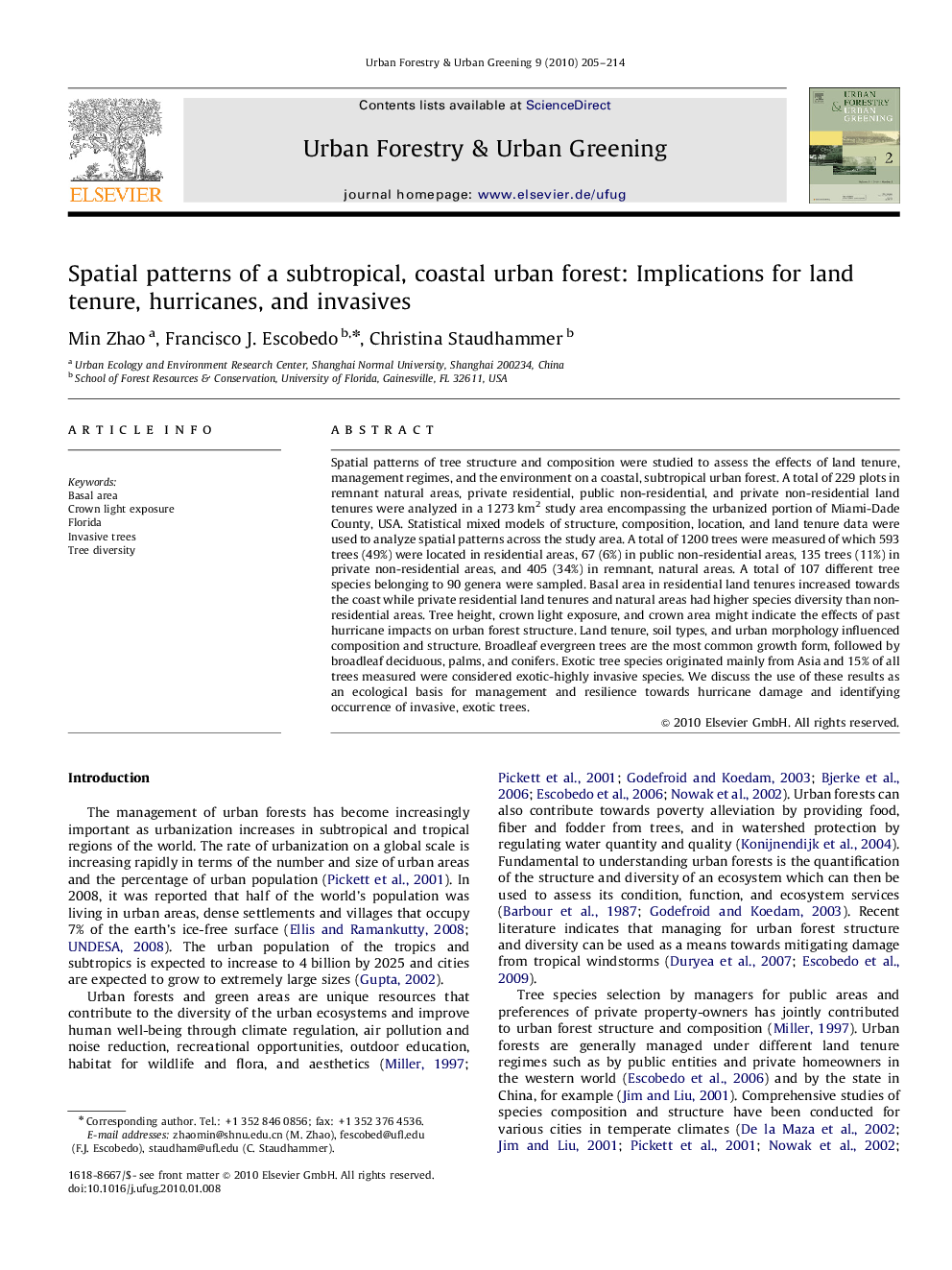| Article ID | Journal | Published Year | Pages | File Type |
|---|---|---|---|---|
| 94307 | Urban Forestry & Urban Greening | 2010 | 10 Pages |
Spatial patterns of tree structure and composition were studied to assess the effects of land tenure, management regimes, and the environment on a coastal, subtropical urban forest. A total of 229 plots in remnant natural areas, private residential, public non-residential, and private non-residential land tenures were analyzed in a 1273 km2 study area encompassing the urbanized portion of Miami-Dade County, USA. Statistical mixed models of structure, composition, location, and land tenure data were used to analyze spatial patterns across the study area. A total of 1200 trees were measured of which 593 trees (49%) were located in residential areas, 67 (6%) in public non-residential areas, 135 trees (11%) in private non-residential areas, and 405 (34%) in remnant, natural areas. A total of 107 different tree species belonging to 90 genera were sampled. Basal area in residential land tenures increased towards the coast while private residential land tenures and natural areas had higher species diversity than non-residential areas. Tree height, crown light exposure, and crown area might indicate the effects of past hurricane impacts on urban forest structure. Land tenure, soil types, and urban morphology influenced composition and structure. Broadleaf evergreen trees are the most common growth form, followed by broadleaf deciduous, palms, and conifers. Exotic tree species originated mainly from Asia and 15% of all trees measured were considered exotic-highly invasive species. We discuss the use of these results as an ecological basis for management and resilience towards hurricane damage and identifying occurrence of invasive, exotic trees.
